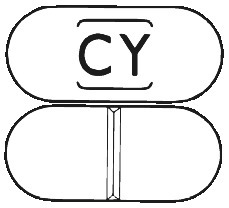1. Why am I taking Cyklokapron?
Cyklokapron contains the active ingredient tranexamic acid. Cyklokapron is used to prevent or reduce excessive bleeding in patients: who experience bleeding inside the eye; that have heavy periods; that experience periodic severe swelling of the throat; after prostate surgery; are undergoing minor surgery and have a blood clotting disorder. For more information, see Section 1. Why am I using Cyklokapron? in the full CMI.
2. What should I know before I take Cyklokapron?
Do not use if you have ever had an allergic reaction to tranexamic acid or any of the ingredients listed at the end of the CM I, are being treated for stroke or blood clots or have a problem with colour vision that developed after you were born.
Tell your doctor if you, or someone in your family has ever suffered from blood clots, severe bruising, convulsion, fits or seizures; kidney disease with or without blood in the urine, unexplained irregular periods. Talk to your doctor if you have any other medical conditions, take any other medicines, or are pregnant or plan to become pregnant or are breastfeeding.
For more information, see Section 2. What should I know before I take Cyklokapron? in the full CMI.
3. What if I am taking other medicines?
Some medicines may interfere with Cyklokapron and affect how it works.
A list of these medicines is in Section 3. What if I am taking other medicines? in the full CMI.
4. How do I take Cyklokapron?
Your doctor will decide how many tablets you need. It will depend on why you are taking this medicine and if you have kidney disease.
More instructions can be found in Section 4. How do I use Cyklokapron? in the full CMI.
5. What should I know while taking Cyklokapron?
| Things you should do | Tell your doctor or dentist that you are taking Cyklokapron. Seek medical attention immediately if you develop a sudden severe headache as this may require urgent medical attention and your doctor may stop Cyklokapron. |
| Driving or using machines | Cyklokapron may cause dizziness or seizures in some people and may influence the ability to drive or use machines. |
| Drinking alcohol | No information available. |
| Looking after your medicine | Store below 30°C |
For more information, see Section 5. What should I know while using Cyklokapron? in the full CMI.
6. Are there any side effects?
The side effects include allergic reactions such as rash, itching or hives on the skin, swelling of the face, lips, tongue or other parts of the body, shortness of breath, wheezing or difficulty breathing; unexpected pain, swelling, warmth or redness in your legs or arms; convulsions, fits or seizures; giddiness or dizziness; changes in your eyesight including colour vision; blood clot or bleeding in the eye or loss of vision; itchy, red or swollen skin; nausea; vomiting; diarrhoea.
For more information, including what to do if you have any side effects, see Section 6. Are there any side effects? in the full CMI.

